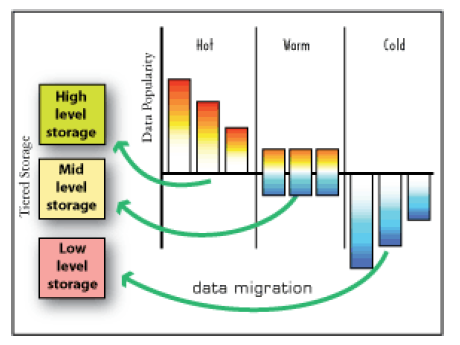Not many people would disagree that after cash, data is the lifeblood of a business, and if it is disturbed, so is the ability of the business to function properly. However, many administrators and planners fail to recognize the fact that the value of data to an organization is not constant. In fact, the value of data decreases over time, as it loses its relevance, freshness, and "popularity". One question that administrators should be asking themselves is: why should data that is decreasing in value remain in expensive front line storage, subject to the same backup, replication, and recovery policies and procedures as key data? Would it not be useful to have a system or methodology in place for analyzing and tracking data freshness, so that storage space could be made free for more fresh and relevant data, and time / bandwidth consuming data protection policies be relaxed as data loses its value? It is here that the concept of Information Lifecycle Management, or ILM, steps into this gap to try and address and resolve some of these questions.
In an ILM configuration, data is analyzed for its value, and stored accordingly. At the peak of its popularity, it is stored in the fastest, most responsive top-tier storage on hand and subject to the most stringent replication and backup controls. Since the ILM system is constantly monitoring the data’s value in comparison to other data, as it loses value, it is migrated down the chain to less expensive, less powerful storage, where it may not be accessed as frequently, or protected as carefully. In the final stage, it is migrated out of the storage system completely. Data of the lowest value is either purged from the system or transferred to other media (e.g., written to tape and delivered to offsite storage) depending upon the organization’s policy and regulatory requirements for data end of life.
